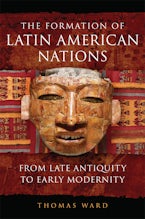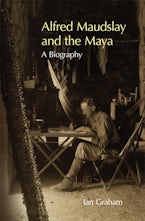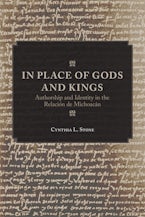HISTORY / Latin America / General
Showing results 1-10 of 69
Filter Results OPEN +

Team of Giants
The Making of the Spanish-American War
A stirring narrative built on rigorous research, Team of Giants is a fresh account of the role the martial ambitions of these men played in a war that would launch the American Century and set each man on the path to his own place in history.
From Peasant Struggles to Indian Resistance
The Ecuadorian Andes in the Late Twentieth Century
Drawing on extensive research in her native Ecuador, Amalia Pallares examines the South American Indian movement in the Ecuadorian Andes and explains its shift from class politics to racial politics in the late twentieth century. Pallares uses an interdisciplinary approach to explore the reasons why indigenous Ecuadorians have bypassed their shared class status with other peasant groups and movements in favor of a political identity based on their unique ethnicity as Indians.
Indigenous Borderlands
Native Agency, Resilience, and Power in the Americas
Hemispheric in its scope, unique in its approach, this work significantly recasts our understanding of the important roles played by Native agents in constructing indigenous borderlands in the era of European imperialism.
Cacicas
The Indigenous Women Leaders of Spanish America, 1492–1825
This volume showcases colonial cacicas as historical subjects who constructed their consciousness around their place, whether symbolic or geographic, and articulated their own unique identities. It expands our understanding of the significant influence these women exerted—within but also well beyond the native communities of Spanish America.
The Real Contra War
Highlander Peasant Resistance in Nicaragua
Relying on original documents, interviews with veterans, and other primary sources, Brown contradicts conventional wisdom about the Contras, debunking most of what has been written about the movement’s leaders, origins, aims, and foreign support.
Tatiana Proskouriakoff
Interpreting the Ancient Maya
Born in Siberia during a turbulent period in Russian history, Tatiana Proskouriakoff came to America during World War I. Proskouriakoff excelled in art and completed a degree in architecture. She entered the field of Mesoamerican archaeology in the mid-1930s as a draftsperson and artist for a University of Pennsylvania archaeological project in the Petén rainforest of Guatemala. By the end of her life, she had become one of the premier scholars of Mayan civilization.
The Formation of Latin American Nations
From Late Antiquity to Early Modernity
This pioneering work brings the pre-Columbian and colonial history of Latin America home: rather than starting out in Spain and following Columbus and the conquistadores as they “discover” New World peoples, The Formation of Latin American Nations begins with the Mesoamerican and South American nations as they were before the advent of European colonialism—and only then moves on to the sixteenth-century Spanish arrival and its impact.
Codex Chimalpahin
Society and Politics in Mexico Tenochtitlan, Tlatelolco, Texcoco, Culhuacan, and Other Nahua Altepetl in Central Mexico, Volume 2
Volume Two of the Codex Chimalpahin represents heretofore-unknown manuscripts by Chimalpahin. Predominantly annals and dynastic records, it furnishes detailed histories of the formation and development of Nahua societies and polities in central Mexico over an extensive period. Included are the Exercicio quotidiano of Sahagun, for which Chimalpahin was the copyist, some unsigned Nahuatl materials, and a letter by Juan de San Antonio of Texcoco as well as a store of information about Nahua women, religion, ritual, concepts of conquest, and relations with Europeans.
Alfred Maudslay and the Maya
A Biography
In this fascinating biography, the first ever published about Alfred Maudslay (1850-1931), Ian Graham describes this extraordinary Englishman and his pioneering investigations of the ancient Maya ruins.
In Place of Gods and Kings
Authorship and Identity in the Relación de Michoacán
In Place of Gods and Kings presents a new reading of an important manuscript that has long been considered the foremost colonial-era source for information related to the indigenous inhabitants of the Mexican state of Michoacán.

Team of Giants
The Making of the Spanish-American War
A stirring narrative built on rigorous research, Team of Giants is a fresh account of the role the martial ambitions of these men played in a war that would launch the American Century and set each man on the path to his own place in history.
From Peasant Struggles to Indian Resistance
The Ecuadorian Andes in the Late Twentieth Century
Drawing on extensive research in her native Ecuador, Amalia Pallares examines the South American Indian movement in the Ecuadorian Andes and explains its shift from class politics to racial politics in the late twentieth century. Pallares uses an interdisciplinary approach to explore the reasons why indigenous Ecuadorians have bypassed their shared class status with other peasant groups and movements in favor of a political identity based on their unique ethnicity as Indians.
Indigenous Borderlands
Native Agency, Resilience, and Power in the Americas
Hemispheric in its scope, unique in its approach, this work significantly recasts our understanding of the important roles played by Native agents in constructing indigenous borderlands in the era of European imperialism.
Cacicas
The Indigenous Women Leaders of Spanish America, 1492–1825
This volume showcases colonial cacicas as historical subjects who constructed their consciousness around their place, whether symbolic or geographic, and articulated their own unique identities. It expands our understanding of the significant influence these women exerted—within but also well beyond the native communities of Spanish America.
The Real Contra War
Highlander Peasant Resistance in Nicaragua
Relying on original documents, interviews with veterans, and other primary sources, Brown contradicts conventional wisdom about the Contras, debunking most of what has been written about the movement’s leaders, origins, aims, and foreign support.
Tatiana Proskouriakoff
Interpreting the Ancient Maya
Born in Siberia during a turbulent period in Russian history, Tatiana Proskouriakoff came to America during World War I. Proskouriakoff excelled in art and completed a degree in architecture. She entered the field of Mesoamerican archaeology in the mid-1930s as a draftsperson and artist for a University of Pennsylvania archaeological project in the Petén rainforest of Guatemala. By the end of her life, she had become one of the premier scholars of Mayan civilization.
The Formation of Latin American Nations
From Late Antiquity to Early Modernity
This pioneering work brings the pre-Columbian and colonial history of Latin America home: rather than starting out in Spain and following Columbus and the conquistadores as they “discover” New World peoples, The Formation of Latin American Nations begins with the Mesoamerican and South American nations as they were before the advent of European colonialism—and only then moves on to the sixteenth-century Spanish arrival and its impact.
Codex Chimalpahin
Society and Politics in Mexico Tenochtitlan, Tlatelolco, Texcoco, Culhuacan, and Other Nahua Altepetl in Central Mexico, Volume 2
Volume Two of the Codex Chimalpahin represents heretofore-unknown manuscripts by Chimalpahin. Predominantly annals and dynastic records, it furnishes detailed histories of the formation and development of Nahua societies and polities in central Mexico over an extensive period. Included are the Exercicio quotidiano of Sahagun, for which Chimalpahin was the copyist, some unsigned Nahuatl materials, and a letter by Juan de San Antonio of Texcoco as well as a store of information about Nahua women, religion, ritual, concepts of conquest, and relations with Europeans.
Alfred Maudslay and the Maya
A Biography
In this fascinating biography, the first ever published about Alfred Maudslay (1850-1931), Ian Graham describes this extraordinary Englishman and his pioneering investigations of the ancient Maya ruins.
In Place of Gods and Kings
Authorship and Identity in the Relación de Michoacán
In Place of Gods and Kings presents a new reading of an important manuscript that has long been considered the foremost colonial-era source for information related to the indigenous inhabitants of the Mexican state of Michoacán.











